Iaido
The Art of Japanese Swordsmanship
By Paul 'Batman' O'Brien
B.A., N.C.E.H.S., Dip. Acu., Adv. Dip. OBB, Cert Clin. Med. Pn1, PN-SSR, PN-NCA, M.AFPA, M.ETCMA, M.C.Th.A.
Iaido is the art of Japanese Swordsmanship. The word itself has a number of meanings and interpretations. Each is dependant of a subjective translation as the word itself, like many Japanese martial concepts does not translate into English at all easily. The word is comprised of 3 Japanese characters: i-ai-do.
Roughly, “I” comes from Iru, to be; Ai (as in Aikido) means coming together, harmony, or love; and Dō means road, or Way (in the Buddhist sense). Loosely translated then, Iaido means being in harmony with one’s surroundings, always being prepared for any eventuality.
Iaido then is a term used to describe a wide variety of traditional styles of swordsmanship which trace their origins back as far as the fifteenth century. During the sixteenth century, when Japan was gripped by conflict and political upheaval, many hundreds of such styles – known as ‘ryū’ – were practised. Today many of these ryu have been lost and died out, though some precious few remain.
I am fortunate enough to train in a Koryū (古流) tradition (Koryū means "old martial ways" - the original martial arts of feudal Japan that pre-date modern arts like Kendo and Karate) of Musō Jikiden Eishin-ryū (無双直伝英信流). You can read more about that style and my first days in the dojo here)
In this section of the site I'll share with you a series of links below that will help you navigate the important aspects of Iai, the Japanese martial arts, the equipment and clothing, frequently asked questions, where and how to train, my recommended resource, philosophy and more.
Iaido Articles
- Eishin Ryu Iaido - A Specific Examination of the Eishin (Chudan) Forms of my style*
- Battojutsu - A distinct form of swordsmanship, understanding the differences*
- Japanese Fencing - Kendo, Ona-ha Itto Ryū, Yagyu Shinkage Ryū, Katori Shinto Ryū and Iai with it's numerous schools, and overview of their key differences and commonalities. *
- Iai sword - My top tips on buying an Iaito - and where to go.*
- Japanese Sword Arts - An overview of the various styles*
- The Iaido dojo - My First Experience of Iai*
- Iai swords - Where to buy and what to do with them*
- Iai Strategy - a discussion of the key concepts of combat*
- Iai obi, Hakama and keikogi - The clothing of Samurai Swordsmanship - and Instructional Video Guide*
- The Iai FAQ - all your swordsmanship questions answered
- Iai kata - An introduction to the core of swordsmanship*
- Free Iai e-book - an exclusive free guide to Samurai Swordsmanship*
* = Coming Soon
Training in the Way of the Samurai
Training in Iai involves a number of distinct yet interrelated disciplines:
Tanren - This is physical conditioning as taught in feudal Japan. It is comprised of a series of body weight and equipped drills. These drills increase psychical conditioning, fitness, strength and improve body movement and co-ordination. They also, importantly contribute to the spirit of the practitioner, training them to develop endurance, perseverance, humility, dedication and more.
Waza - The techniques, forms and kata of the Musō Jikiden Eishin-ryū school of Iai. These are the core teachings of the school and foundation of Iaido. In virtually all schools of Iai, the kata/waza are composed of four essential elements. These are:
- Nukitsuke – The initial draw and simultaneous cut.
- Kiritsuke – The decisive finishing cut.
- Chiburui – A symbolic shaking of blood from the blade.
- Noto – Resheathing the sword.
Practically all kata have these fundamental parts in some combination or other, but may also include blocks, deflections, thrusts, and multiple cuts, depending on the scenario. Iai kata are performed solitary against imaginary opponents, called kassoteki, or teki. (There are also partner kata which I’ll mention in a moment).
The fact that there is no real adversary means the practitioner needs to be aware of where teki is at all times, and to focus his techniques accordingly. This demands intense concentration from the Iaidoka. Each kata, though outwardly simple, has myriad technical details that can make it fiendishly difficult to master. Indeed, a single kata could easily take a lifetime’s study, and still not be perfected. However, it is this quest for almost unattainable perfection that makes Iai what it is – a Way of strengthening the body, developing the character, and forging the Spirit.
Tachi Uchi no Kurai (太刀打之位) - These are the paired combat forms of Iai. These teach the student distance, timing and to confront a physical opponent.
Muto-Dori - Unarmed defences against the sword. These techniques are not communally known outside of Japan and it is a great privilege and honour to include these techniques in our curriculum.
Although the techniques practised by students of Iai are based on the combat methods of feudal Japan, the purpose of Iaido training is the development of the self, not only in physical but also in moral and spiritual terms. Even during the early stages in the history of the various ryu, it was recognised that these moral and spiritual effects of training in swordsmanship were beneficial not merely to the individual swordsman, but to society as a whole. As military and political conditions in Japan changed, particularly in the mid – 20th century, the philosophical and moral aspects of training gained more emphasis.
In the modern era, Iai is still practised in the traditional manner, and the curriculum taught at my dojo is comprised entirely of traditional techniques and methods of swordsmanship. The style of Iai studied at my dojo is Musō Jikiden Eishin-ryū, founded by Hayashizaki Jinsuke Minamoto no Shigenobu (林崎甚助源の重信), born in 1546. Thus, to train in Iai is to forge a direct link with the classical martial traditions of Japan.
You've been reading about Iaido. Check out my first experience in the Dojo here.
Click here to Return to the Way of the Samurai Home Page
Free Samurai E-books
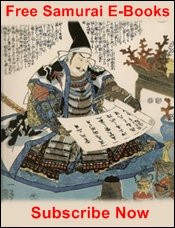
Get Free Exclusive Samurai Guides and E-books





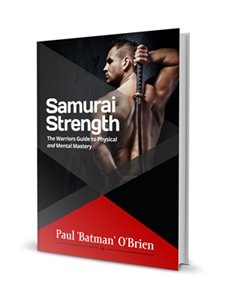
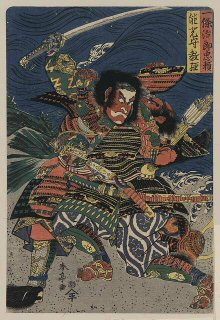
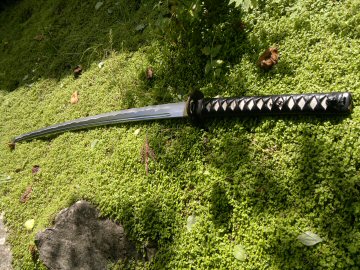
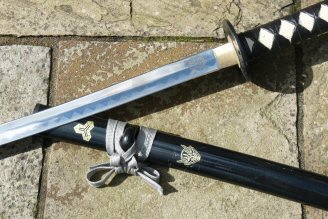
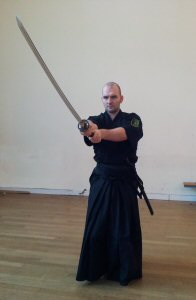
New! Comments
Have your say about what you just read! Leave me a comment in the box below.